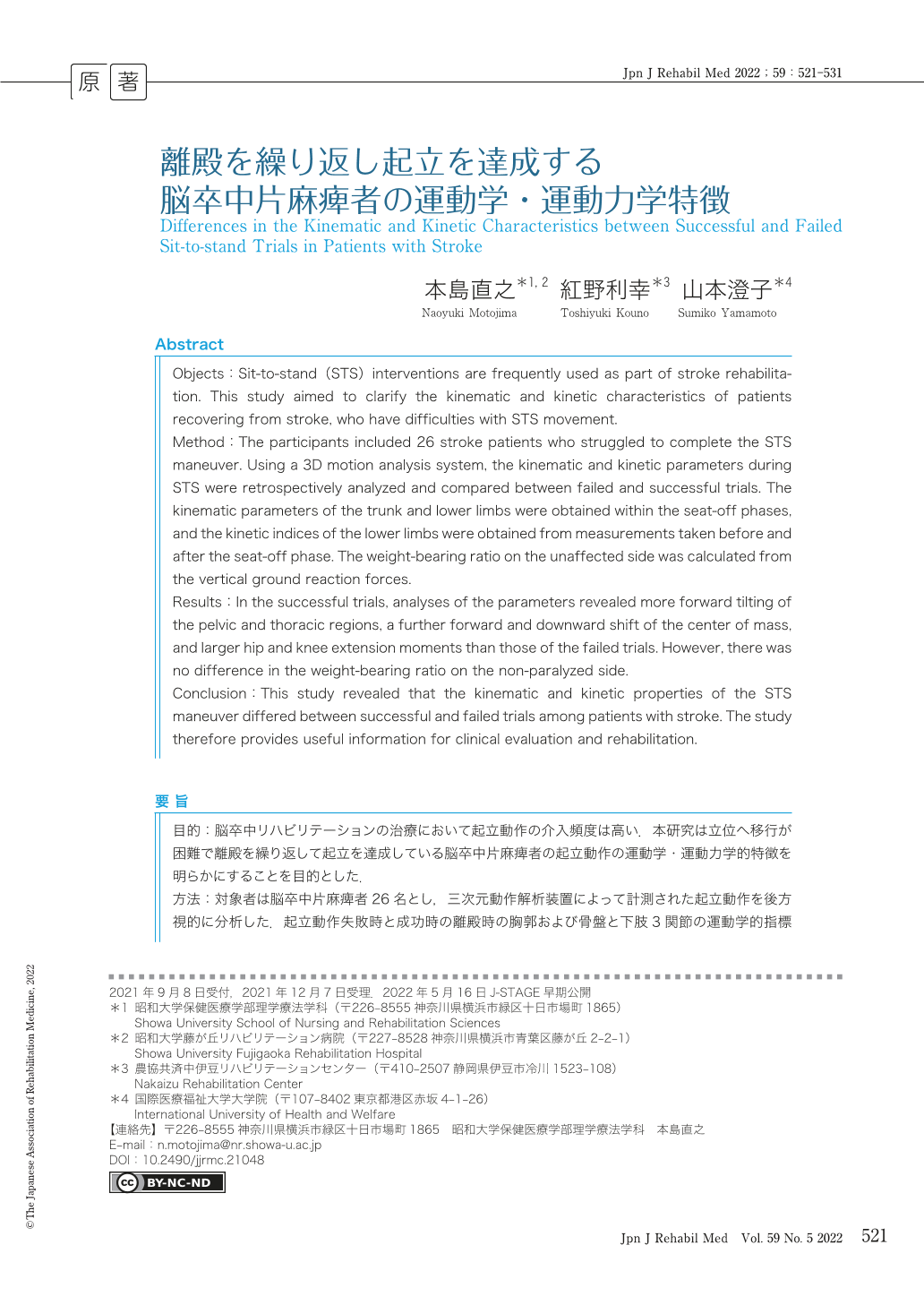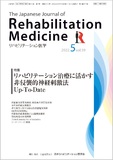Japanese
English
- 販売していません
- Abstract 文献概要
- 1ページ目 Look Inside
- 参考文献 Reference
要旨
目的:脳卒中リハビリテーションの治療において起立動作の介入頻度は高い.本研究は立位へ移行が困難で離殿を繰り返して起立を達成している脳卒中片麻痺者の起立動作の運動学・運動力学的特徴を明らかにすることを目的とした.
方法:対象者は脳卒中片麻痺者26名とし,三次元動作解析装置によって計測された起立動作を後方視的に分析した.起立動作失敗時と成功時の離殿時の胸郭および骨盤と下肢3関節の運動学的指標と離殿前後の下肢3関節の運動力学的指標および離殿後の足部荷重割合を起立動作失敗時と成功時で比較した.
結果:起立動作成功時は失敗時と比較して骨盤や胸郭の前傾,身体重心の前下方移動および離殿前後の股関節伸展モーメントが大きかった.しかし,非麻痺側荷重率に違いはなく,離殿前の股関節屈曲モーメントも出現していなかった.
結論:離殿を繰り返して起立を達成している脳卒中片麻痺者の起立動作は,その可否によって離殿時の骨盤および胸郭前傾角度や離殿後の股関節伸展モーメントが異なっていた.このことは脳卒中片麻痺者の起立動作達成の要因を示唆しており,脳卒中片麻痺者の起立動作達成のためのリハビリテーション医療における評価および治療に有用であると考える.
Objects:Sit-to-stand (STS) interventions are frequently used as part of stroke rehabilitation. This study aimed to clarify the kinematic and kinetic characteristics of patients recovering from stroke, who have difficulties with STS movement.
Method:The participants included 26 stroke patients who struggled to complete the STS maneuver. Using a 3D motion analysis system, the kinematic and kinetic parameters during STS were retrospectively analyzed and compared between failed and successful trials. The kinematic parameters of the trunk and lower limbs were obtained within the seat-off phases, and the kinetic indices of the lower limbs were obtained from measurements taken before and after the seat-off phase. The weight-bearing ratio on the unaffected side was calculated from the vertical ground reaction forces.
Results:In the successful trials, analyses of the parameters revealed more forward tilting of the pelvic and thoracic regions, a further forward and downward shift of the center of mass, and larger hip and knee extension moments than those of the failed trials. However, there was no difference in the weight-bearing ratio on the non-paralyzed side.
Conclusion:This study revealed that the kinematic and kinetic properties of the STS maneuver differed between successful and failed trials among patients with stroke. The study therefore provides useful information for clinical evaluation and rehabilitation.

Copyright © 2022, The Japanese Association of Rehabilitation Medicine. All rights reserved.


